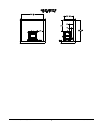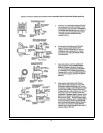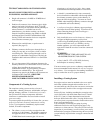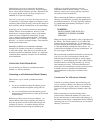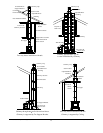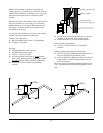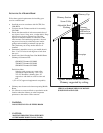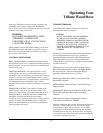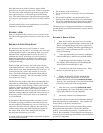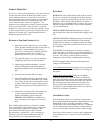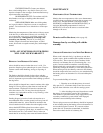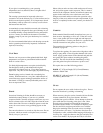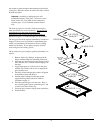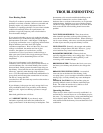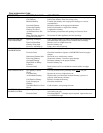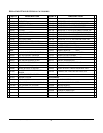
HearthStone Quality Home Heating Products Inc ® Tribute Model 8040
17
Stack the firewood on skids or blocks to keep it off the
ground, cover only the top of the stack. Plastic or tarps that
cover the sides of the woodpile trap moisture and prevent
the wood from drying. As for stacking, an old Vermonter
said, "The spaces between the logs should be large enough
for a mouse to get through, but not for the cat that's chasing
it."
Firewood should not be stored within the stove's specified
clearances to combustible materials.
BUILDING A FIRE
Once you understand the controls of your wood stove and
have chosen the appropriate firewood, you are ready to start
a fire.
BREAKING IN YOUR WOOD STOVE
It is imperative that your stove be "broken in" slowly.
Soapstone mu st be "seasoned"; over-firing a new stove may
cause soapstone to crack or may damage other stove parts.
Moisture in the soapstone must be driven out slowly to
minimize the “shock” to the stone of its first exposure to
high firebox temperatures. In addition, the asbestos-free
furnace cement must be cured slowly to insure adequate
sealing and bonding.
When you light your first fires, the wood stove will emit
some smoke and fumes. This is normal “off-gassing” of the
paints and oils used when manufacturing the wood stove. If
you find it necessary, open a few windows to vent your
room. The smoke and fumes will usually subside after 10
to 20 minutes of operation. The odor and smoke will end
once the stove is “cured”.
The first fires may produce other odors from impurities that
exist in the area immediately surrounding the stove. Some
of these impurities can be cleaning solvents, paint solvents,
cigarettes, smoke, pet hair, dust, adhesives, a new carpet,
and new textiles. These odors will dissipate over time.
You can alleviate these odors by opening a few windows or
otherwise creating additional ventilation around your stove.
If any odor persists, contact your dealer or an authorized
service technician.
If you adhere to the following break-in procedure, as well
as all other operating procedures in this manual, the cast
iron and soapstone components of your stove will give you
many years of trouble-free use. With use, the color of the
soapstone may change and small fractures may appear on
the surface of the stone. These changes will only add
character and distinction to your stove.
Avoid the following conditions that can cause the soapstone
or cast iron pieces to break:
• Do not throw wood into the stove.
• Do not use the doors as leverage to force wood into the
stove.
• Do not load wood that is encrusted with ice into a
burning stove as the thermal shock can cause damage.
• Do not use a manufactured grate. Burn the fire directly
on the soapstone that lines the bottom of the firebox.
The bottom layer of soapstone in the firebox is intended to
prevent thermal stress and should remain in place in the fire
box at all times.
BUILDING A BREAK IN FIRE
1) Open the front door and place five or six double
sheets of tightly twisted newspaper in the center of the
firebox. Arrange kindling in a crisscross pattern over
the newspaper. Kindling should be approximately ten
pieces, 1/2" (13 mm) in diameter and 10" to 18" (254
mm to 457 mm) long.
2) Fully open the primary air control by pushing the
control handle fully to the left, away from the firebox.
3) Light the paper under the kindling. Leave the
door slightly ajar momentarily until the kindling has
started to burn and draft begins to pull.
4) Close the door and allow the fire to burn. Keep
the door closed while the stove is in use.
5) KEEP A WATCHFUL EYE ON YOUR STOVE
to maintain a steady, low-heat fire. Your first fire
should make the stove warm but not hot to the touch.
At most, a few small chunks of wood should be added
to the fire to reach safe break-in temperatures.
6) Once the stove is warm but not hot to the touch,
close the primary air control by pushing it fully to the
right to allow the fire to die out completely.
7) Let the stove return to room temperature.
Your first fire and first fire each season thereafter should be
built and maintained as outlined above. Your patience will
be rewarded by a properly seasoned stove.
NOTE: Because of the cool flue gas temperatures present
during the break-in procedure, creosote may build up
quickly. Your window may get dirty. A good hot fire will
clean it. We recommend a visual inspection (and cleaning if
necessary) of your stovepipe and chimney once the break-in
procedure is completed.



